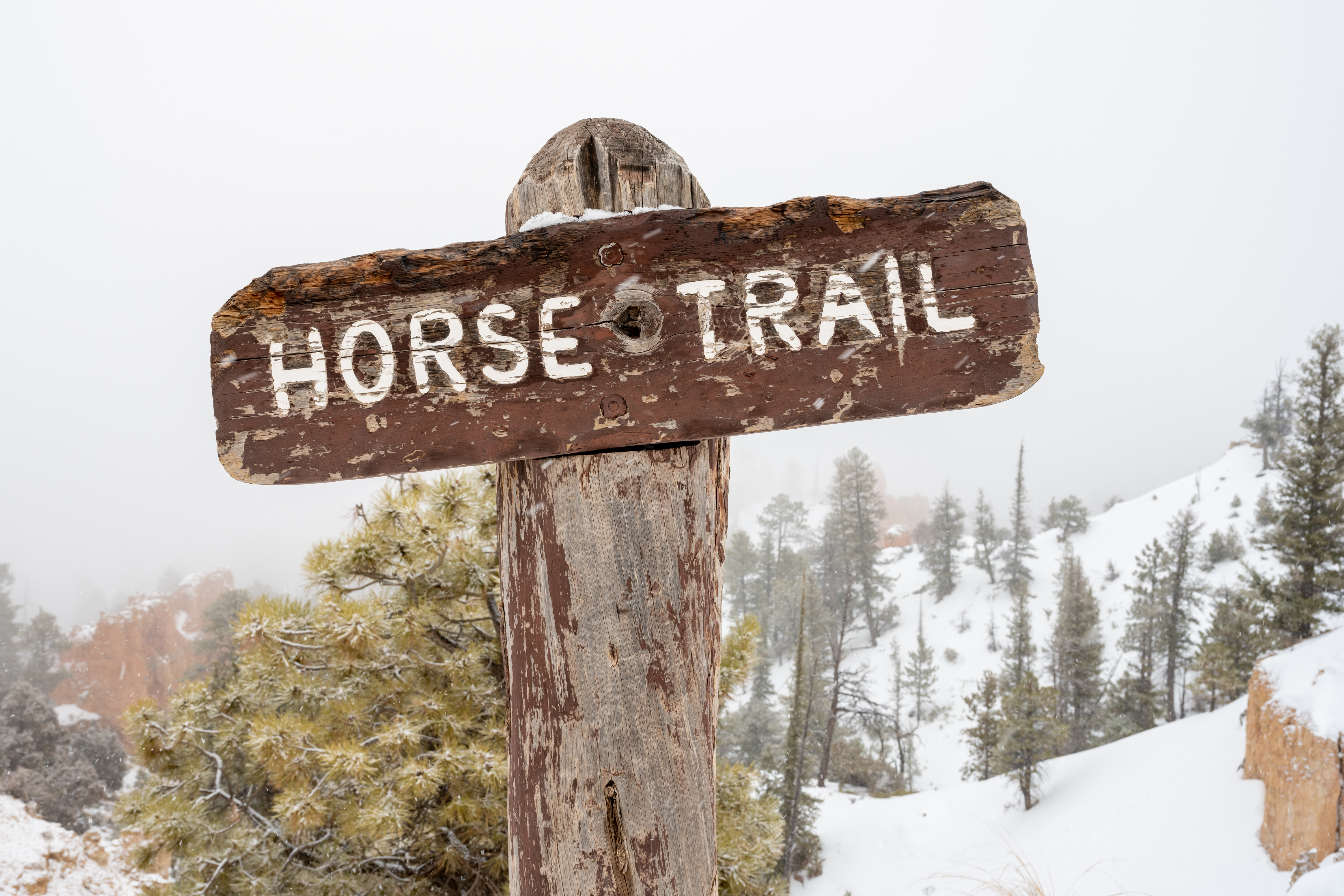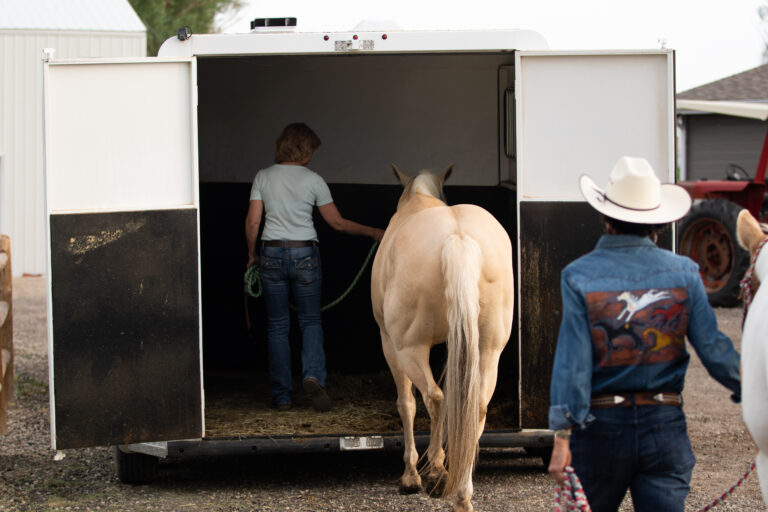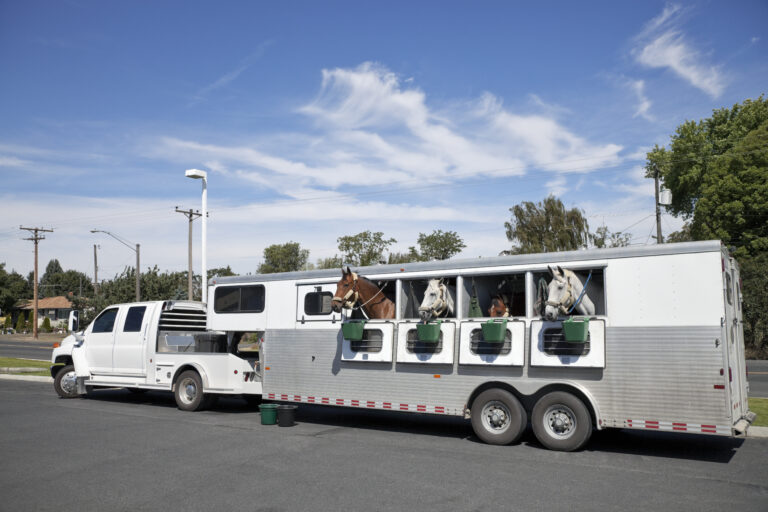Cold, snowy days don’t keep you off the trail. Put safety first with these expert tips on negotiating winter trail hazards.
Winter trail riding can be fun if you’re prepare with these tips. Of course, you try to avoid the trail riding hazards that might get you and your horse into real trouble, such as blizzards and ice storms. But Mother Nature has a wicked sense of humor. A nice winter day can turn nasty in minutes. You might find yourself riding in snow far deeper than you’d anticipated or suddenly sliding downhill on an icy trail.

Here, we give you tips on how to negotiate seven winter riding hazards:
Hazard #1: Deep snow
Why it’s hazardous: Your horse may panic in a deep snow bank and flounder about, possibly pulling a muscle, or straining tendons and ligaments. Deep snow can also cover underlying trail hazards, such as holes and sharp objects.
What you should do: Find and stick to trails and roadways where the snow isn’t as deep. Keep your horse well collected, with his weight back over his hindquarters. A collected horse usually has a “spare leg” to catch himself, because his weight is more evenly distributed in relationship to his center of gravity; he’ll be more agile with less effort than if he carries his weight on his forehand. At the same time, give him enough rein so that he can use his head and neck for balance.
Keep in mind that moving through deep snow will tire your horse, especially if the snow is wet and heavy. (Fine, powdery, dry snow is much easier for him to step through.) Scale back your ride, especially if he isn’t in top shape. Otherwise, he may become worn out and sore, and/or develop muscle cramps.
Avoid brushing against snow-covered trees and bushes. You can get chilled if a load of snow falls down your neck, and onto your bare hands and saddle seat. Your horse may also spook at the falling snow.
Hazard #2: Snowdrifts
Why they’re hazardous: Blowing, drifting snow can fill ditches and gullies, leaving a smooth landscape. You won’t know your horse is walking into a hole or deep gully until the ground drops out from under him, and he’s floundering or falling down.
What you should do: Stick to familiar trails; don’t travel cross-country, where the terrain is rougher. Avoid riding through the drifted areas, if possible. You may not be able to gauge drift depth until your horse is up to his belly and struggling to wallow through.
Hazard #3: Frozen ground
Why it’s hazardous: Frozen ground is second only to sheer ice in slickness. Even grass is slippery when frozen. Your horse’s feet are designed to cut into the ground a little with each step, for traction. If he can’t dig into the hard, frozen surface, his feet will slip at every step. And he may go down so quickly that you won’t have time to pull your foot out of the stirrup and get out of harm’s way.
What you should do: Take it slow.Travel at a walk, and avoid sudden turns
or stops. Try to stay on flat terrain. Especially try to avoid going downhill; horses usually have better traction going up than down.
Never go around the side of a hill; instead, ride straight up or straight down the hill. When you get to a more level area, you can continue in the direction you wish to go. When going downhill, a surefooted horse that’s going straight can slip and slide all the way to the bottom and still keep his feet underneath himself. Even if he slides down on his haunches, he won’t fall. However, if he’s traveling at an angle to the hill, his feet may slip out from under him, causing a bad fall.
If your horse is reasonably surefooted, don’t dismount, unless you can get well away from him as you lead him. It’s safer to stay on him than to risk slipping and falling. Once you go down, your horse may then inadvertently slide into or run over you. If the footing is that treacherous, you won’t have any better traction than your horse, especially if you’re wearing smooth-soled riding boots. He has four legs for balance; you have only two.
If you do need to dismount, stay well out of your horse’s way and off to the side, in case he slides or falls. Dismount off his right side, if it seems safer.
Even if you’re traveling on dry, safe terrain, beware of shaded areas and north-facing slopes that don’t get much winter sun. These areas may still be frozen and treacherous.
Hazard #4: Ice
Why it’s hazardous: All ice is treacherous, from frozen puddles and ice-covered streams to melted snow that’s re-frozen. A heavy, wet snow that then freezes to the ice can provide a little traction, but a wet snow or rain that freezes over ice will just make it even more slippery. A fine, powdery snow on ice may also make it more slippery.
On ice, your horse can easily lose his footing, scramble, and fall down, then have trouble getting up again. If your horse does the “splits,” he may seriously injure himself, as well as put you at risk as he struggles and falls.
What you should do: Avoid riding across patches of ice, if at all possible. Watch for ice hidden under fresh snow, which is especially treacherous. If you suspect there’s ice under the snow in a certain spot, go around it.
If you ride frequently in winter, consider shoeing your horse with traction in mind. Consult your farrier for options. (For more on winter shoeing, see “Winter Hoof Care,” Safe & Sound, January/February ’06, or visit www.myhorse.com/trailrider.)

Hazard #5: Packed snow
Why it’s hazardous: Packed snow can be just as slippery as ice. A polished trail or road, packed by hoof traffic or vehicles, is ice, and very slippery indeed.
What you should do: Try to find a path through undisturbed snow, which is much less slippery than a packed track. Ride to the side of the trail if you need to. If you’re traveling with a group, keep in mind that while the ride leader may be gaining traction in fresh, undisturbed snow, the horses who follow will be on slippery, packed snow.
The ride leader should go slowly to allow for this hazard.
Hazard #6: Freezing rain/ice storm
Why they’re hazardous: Your horse is at great risk for an injury-inducing fall. Unlike other hazards, which you might be able to go around, ice coats every surface. Preparing for a ride, or if you dismount, you’re likely to slip and fall.
What you should do: If all surfaces are coated with ice, choose a better day for a ride. If you’re on a long ride and get caught in freezing rain or an ice storm, choose the safest route home possible. Keep to a walk, and avoid sloping ground, even if it means going a longer way around an area of risky footing.
Hazard #7: Slippery mud/deep mud
Why they’re hazardous: Wet, slippery mud puts your horse at risk for a fall. Deep mud also increases your horse’s risk of falling, as he may not be able to pull his feet up quickly enough to catch himself, especially if he hits mud unexpectedly.
Also in deep mud, your horse may struggle and flounder, possibly pulling muscles, tendons, or ligaments, or damaging joints. As he struggles, he may kick off a shoe. The mud itself can pull off a shoe.
What you should do: In slippery mud, see the precautions for negotiating frozen ground (Hazard #3), especially on hills. If the trail is dry, still watch out for shaded areas, such as timbered slopes, where the ground may still be wet and muddy. Also watch for wet soil over frozen ground, especially as spring approaches.
In deep mud, keep your horse calm, and go slow; it takes extra effort for him to pull his feet out at each step. If he moves faster than a walk (or tries to jump over or through a muddy area) and becomes mired, his momentum may throw him down head over heels, taking you with him.
If you must dismount in mud, scrape the mud off the bottom of your boots before you remount. Muddy boots can slide out of the stirrups, impeding your balance. Use a rock, sagebrush—whatever is available—to remove the mud.











